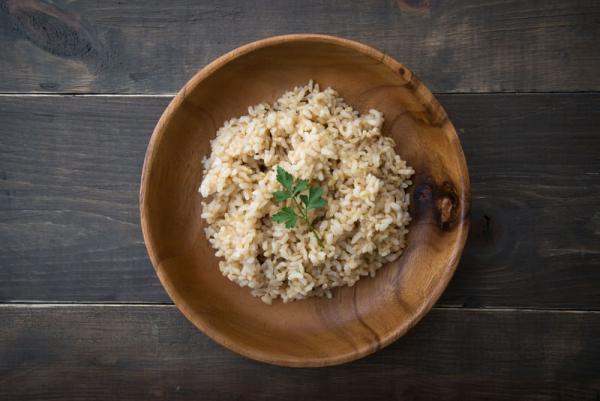
What's the difference between white rice and brown rice? Here's a hint: it's not just color.
It's not often that making one small change can yield big health results, but this is one of those times. In fact, making a simple switch from white to brown rice could have a big impact on your health:
White rice vs. brown rice
White rice and brown rice have a lot in common. They are both carbohydrates with very little protein and no fat. They are similar in appearance and can be used interchangeably in most situations. But that's where the similarity ends.
Think of the difference between white rice and brown rice as the difference between white bread and whole grain bread. White rice has been refined so that it only contains part of the grain. By contrast, brown rice still has:
-
Bran, which provides fiber
-
Germ, which contains most of rice's nutritional value
-
Endosperm, which is rich in healthy carbohydrates
White rice has almost no nutritional value. It's not a good source of fiber, nor does it contain many vitamins.
Brown rice, on the other hand, is a good source of:
-
Fiber
-
Manganese
-
Magnesium
-
Phosphorus
-
Thiamine
-
Niacin
While brown rice does contain some compounds that inhibit your body's ability to absorb nutrients from food (known as phytic acid, or phytate), its higher nutritional content makes up for that. Additionally, the fiber in brown rice makes it more filling than white rice and also extends the digestive process.
In other words, eating brown rice keeps you feeling full longer than white rice does.
How does switching to brown rice improve your health?
Switching to brown rice might not seem like a big deal, but it can have a significant, positive impact on your overall health. In fact, it's as good for you as taking a 30-minute walk. (We're not saying you shouldn't walk too, but why not do both?)
Here are some of the ways that switching to brown rice can improve your health:
1. Brown rice contains compounds called lignans, which are found in other whole grains and seeds.
Evidence suggests that eating lignans decreases your risk of heart attacks and cardiovascular disease.
2. Certain studies also suggest that eating brown rice can lower your blood pressure and help fight inflammation in the arteries.
Inflamed arteries can lead to coronary atherosclerosis, which is a major risk factor for heart disease.
3. Switching to brown rice may help reduce the risk of you getting certain types of cancer.
Brown rice contains botanical compounds known as total phenolic contents, or TPC. TPCs have powerful antioxidant properties that can protect your cells from a type of damage known as oxidative stress, which may contribute to some cancers.
4. Eating whole grains - like brown rice - can help you lose weight and reduce the risk of obesity and obesity-related diseases.
One study tracked the eating habits of 74,000 overweight and obese women and found that women who ate whole grains consistently weighed less than woman who ate less whole grains. Another found that women who ate brown rice had lower body weight and smaller waist sizes than woman who did not.
How does walking improve your health?
Walking helps people lose and maintain a healthy weight, reduces blood pressure, lowers LDL cholesterol and raises HDL cholesterol, reduces the risk of heart attack and stroke, and reduces the risk of pre-diabetes and diabetes.
In other words, switching from brown to white rice gives you many of the same health benefits and perks as taking a 30-minute walk every day.
Make the switch to brown rice
Brown rice is delicious and can be used in almost any recipe that calls for white rice. When it comes to preparing the two grains, the only real difference is how long it takes to cook - brown rice takes longer. But, isn't a few extra minutes on the stove worth it if it helps reduce your risk of heart disease, cancer and diabetes?

